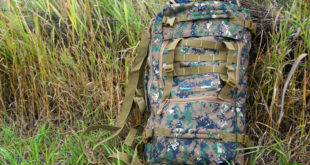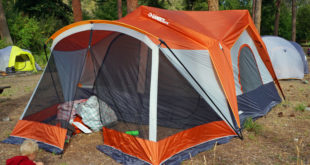This one is for all you out there that sleep like a log. A log that doesn’t roll around.
In the pursuit of lightening the pack load and saving my back while carrying my kids’ backpacking gear I’ve been doing a lot of reading on backpacking quilts. They’re lighter and smaller, but just as warm. And here’s why.
Insulation
We’ve all heard talk of loft. We’ve all seen the puffy Michelin man jackets and there’s some logic to it all. A lot in fact. It’s trapped air and loft that prevents your warmth escaping and prevents the cold from entering. The more loft you have, the warmer you stay… in theory.
Think about all that insulation in your roof. You go into your attic or loft and find lots of the stuff lying around. The thicker it is, the less money you spend on heating in winter. They try to sell you more expensive insulation that you need less of because it insulates better. That’s the same thing that happens with sleeping bags.
Your cheap sleeping bags do a good job as they use tons of cheap insulation. They also weigh a ton. Or at least 4 or 5 pounds for a good winter bag. Your expensive bags use less, but higher quality insulation and that saves you weight, allowing for a lot of weight savings. To give you an idea, I have a cheap 40 degree bag that has a list weight of 3.7 lbs. I have a down bag with the same listed temperature that has a weight of 1 lb 6 oz. The down bag is also about a third of the size when uncompressed.
If weight and space is an issue for you parents or you UL backpackers it may be worth forking out a bit more to buy a good down bag. There’ll be less grumbling at a sore back and more time to enjoy the scenery.
How to effectively use insulation
 |
| Vaude’s down bag design |
But how can you save more weight? As has been shown, insulation insulates when it has loft. When you lie on it, it looses most of its insulating properties. That means, that all that weight of insulation that you’re lying on is practically useless; especially if you use a sleeping pad that will do that job for you.
That’s why people have been turning to quilts. They save you that weight by not having a zipper or the extra fabric and insulation that you would normally lie on. It allows you to shave off weight and save space for other stuff in your pack.
To give you an example, Golite has been making quilts and sleeping bags for a while now. Comparing their Adrenaline 800+ goose down bag with their Ultralight 800+ goose down quilt shows a significant difference in weight.
Golite ultralight down (800+) quilt – rating 20°F / -7°C Weight: 1 lb. 8 oz.
Golite Adrenaline down (800+) mummy bag – rating 20°F / -7°C Weight: 2 lbs. 3 oz.
By cutting down on materials and insulation, the weight drops over half a pound on an already very light sleeping bag.
Do It Yourself
Making my own sleeping bag scares me. I’m not a stranger to a sewing machine, but making a down quilt seems like a big project. However, converting a sleeping bag into a quilt doesn’t scare me, just my wife. It’s doable. I’m working on a project now that copies the Big Agnes idea of replacing the bottom insulation of a sleeping bag with a sleeping pad. I’ve cut out a couple hundred grams and a bunch of space.
The other benefit, especially for down bags is that you can take all that bottom insulation and put it on the top to make a warm weather bag take you further into the winter season.
If you’re looking to do some DIY, why not check out the following links for some ideas?
Purebound.com’s mummy bag to quilt conversion
Thru-hiker’s down quilt project (for the brave (or bold) seamster/stress
 The Outdoor Adventure Giving you tips, tricks & recommendations to help make adventuring in the Outdoors fun, safe & exciting for you and your kids.
The Outdoor Adventure Giving you tips, tricks & recommendations to help make adventuring in the Outdoors fun, safe & exciting for you and your kids.




